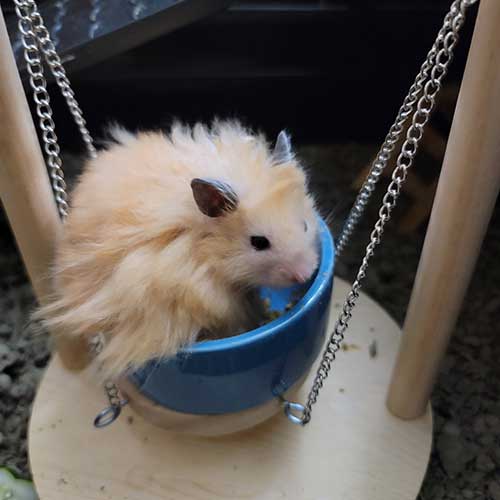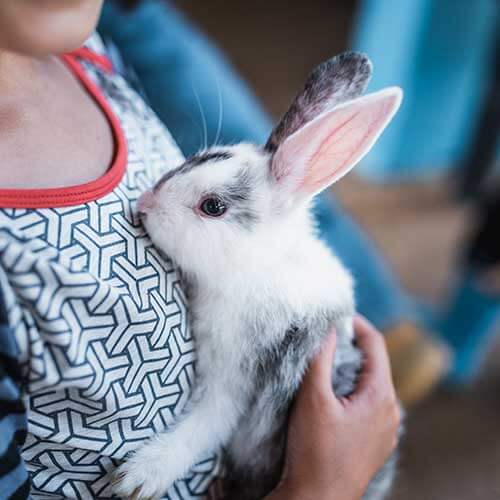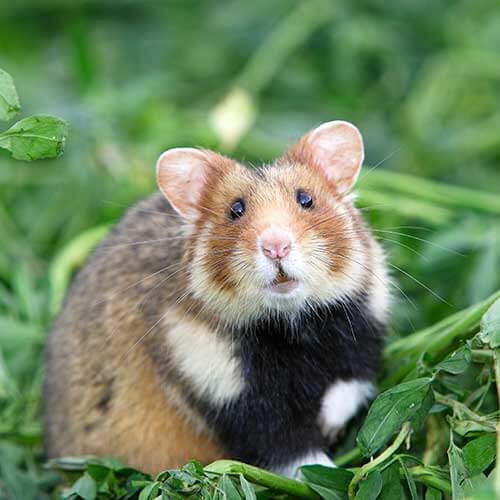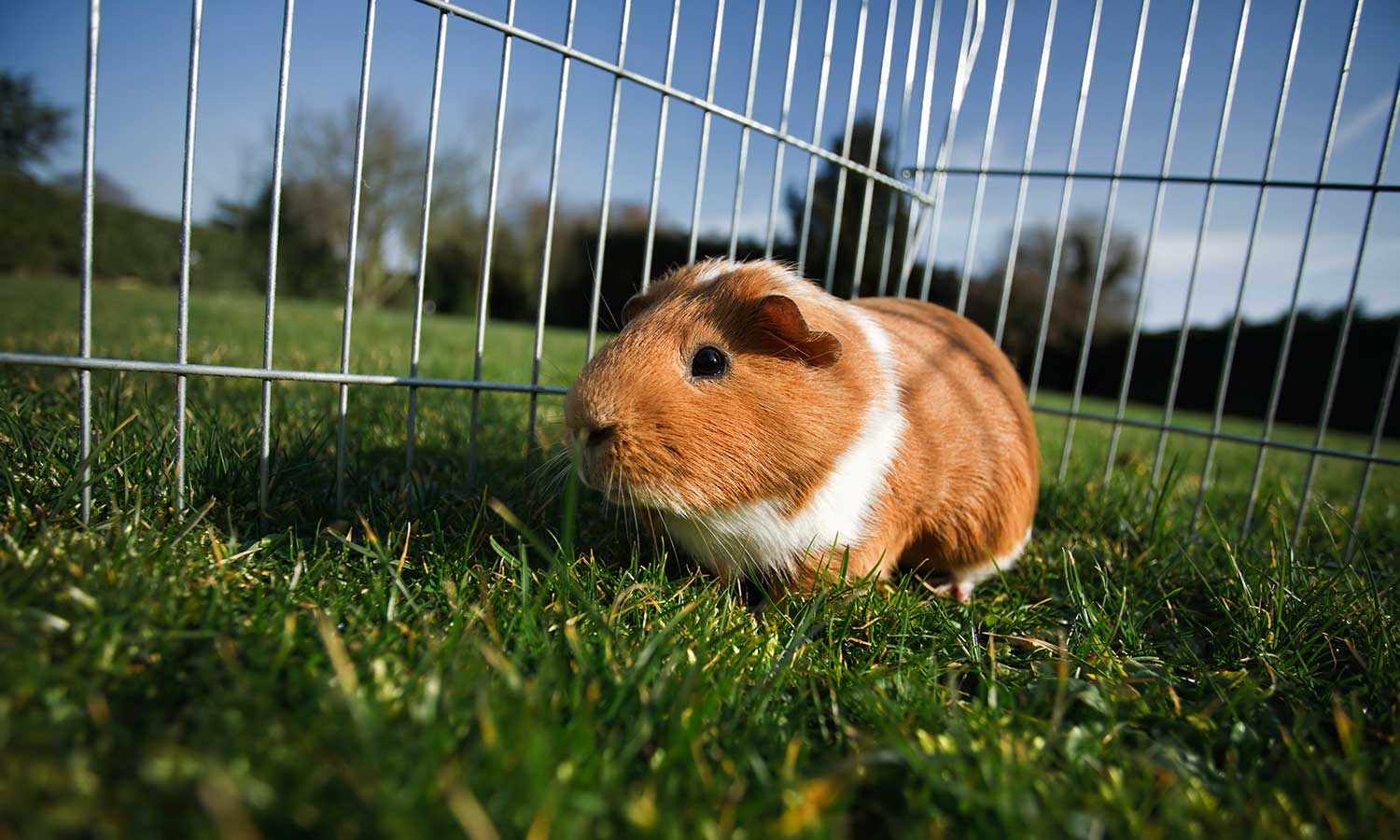Pocket Pets

Last and certainly not least are our pocket pets! What do we mean by “pocket pet?” They are small mammals that can (often) fit in your pocket! While many species fall into this category, Amberglen Pet Care happily welcomes rabbits, ferrets, guinea pigs, chinchillas, rats, mice, and hamsters. Dr. Burris even has one of her own at home, and knows how much joy and fun her pet brings to her life.
Unique Needs
Each type of pocket pet has its own wellness needs and challenges. We offer:
- Surgical care
- Vaccinations (for select species)
- Dental care
- Nutrition assessment
- Environmental enrichment
- Chronic disease management
- Husbandry
Lifestyle Enrichment
While playing with any pet is important for their mental and physical health, pocket pets often have specialized needs in this area. On top of enriching play, certain pets may require hay to burrow in, a hard-floored space to stand upright, or even a mineral powder for bathing! We are happy to discuss all the details you might need to know concerning your little family member’s lifestyle needs.
Husbandry for Pocket Pets
The definition of Husbandry is the proper management and care for animals, including regulation of water, food, environment, and breeding. We want our pocket pets to live full, healthy lives. Just like dogs and cats, each species of pocket pet has specialized enrichment and husbandry needs. Check out the breakdown below!
Guinea Pigs
Guinea pigs make great pets, and are a go-to choice for children and young adults. The more people interact with their guinea pigs, the more their personality can shine!
Diet. Guinea pigs eat hay, but should avoid high-starch foods such as alfalfa, peas, beans, corn, nuts, cakes, cookies, cereal, bread, etc. Vitamin C is important to a guinea pig's diet, and they need ample supplementation in the form of greens or water additives. Excellent choices for fresh Vitamin C supplementation includes parsley, kale, spinach, among others!
Environment. A well-tended cage leads to a healthy guinea pig. A non-abrasive floor is important, and bedding materials must be non-toxic, relatively dust-free, and easy to replace. Examples include: wood shavings, shredded paper, processed ground corn cob, and commercial pellets. Cage ventilation is also important, as well as its location in the house. A quiet, out-of-the-way location provides maximum comfort for our curious friends.
Breeding. Female guinea pigs are first in heat between four and seven months of age, and are in heat for an average of 14 to 19 days—though they are only receptive to a male for eight to fifteen hours. If breeding is not in your family plan, please keep male and female guinea pigs separate. Contact us with any questions!
Rabbits

Rabbits are intelligent, friendly, and quiet: great companions with an average lifespan of 7 to 10 years. Please make sure you have ample space for them to explore and play!
Diet. Rabbits are herbivores, and pick up most of their calories from hay and leaves. A wide diet of non-legume hay, green foods, and rabbit pellets ensure a robust GI tract for our furry family members. Just like the guinea pig, avoid feeding your rabbit starchy foods like bread, cereal, chocolate, corn, refined sugar, and wheat. Water should always be available.
Environment. Rabbits should not be confined to a cage completely, and the more movement they have each day, the healthier they will be. A few hours of roaming each day is important to their enrichment and health, along with locations where they can “hide” such as a covered box or a bed of hay. A cage is helpful for sleep and protection. As rabbits like to chew, rabbit toys further help enrichment.
Breeding. There are spay and neuter (castration) options available for your rabbit. If you have questions concerning whether this is a healthy plan for your pet, please Contact us to discuss options.
Hamsters

These tiny guys are the definition of “pocket pet”! As a pet that is happy being confined by a cage with an average lifespan of around 2 to 3 years.
Diet. Hamsters should have fresh pellets (at 15–20 percent protein), and clean, fresh water at all times. Seed diets should only be supplemented along with the pellets. Water delivery works best with sipper tubes located within easy access.
Environment. Cages with enrichment “furniture” such as exercise wheels, tunnels, and nest boxes are important for the health of a hamster. The most important aspect of a hamster’s environment is adequate bedding to burrow in that is clean, non-toxic, and relatively dust-free. A cage with rounded edges is most preferable, as our little friends can chew through plastic, wood, and soft metal. Well-ventilated wire, stainless steel, durable plastic, and glass are the preferred cage materials.
Breeding. Keep hamsters separate from each other, as females tend to fight each other, males tend to fight each other, and a male/female combination often leads to unplanned breeding. Call us with any questions involving hamster husbandry.
Mice and Rats
With the proper care, mice and rats make excellent pets! They are timid, playful, and docile if used to being handled.
Diet. A diet of rodent pellets is all they need for their diet. Since mice and rats usually eat at night, careful monitoring of their diet can tip off a savvy owner to changes in health. Mice and rats also change their food intake based on fluctuations in temperature, humidity, the quality of the food, and whether they are in heat or not.
Environment. A mouse or rat’s cage should be thoroughly cleaned at least once a week. Food and water dishes should be cleaned daily. Adding exercise wheels, tunnels, or nest boxes is ideal for the well-being of your furry family member. Deep bedding and ample nesting material is very important to the natural burrowing nature of mice and rats, and durable cage material such as wire, stainless steel, durable plastic, or glass keeps them from chewing through.
Breeding. Mice and rats should be paired properly in order to minimize aggression and maximize successful mating. When caged together, adult male mice often fight each other when around a female. Rats can usually live in groups of males and females without aggression. If you don’t plan for more furry family members, please contact us with any questions you might have!
Ferrets
Playful, curious, and full of personality, ferrets are highly social pets that love interaction and enrichment. They can live 6 to 10 years with proper care, and form strong bonds with their humans.
Diet. Ferrets are obligate carnivores and need a high-protein, high-fat diet. Quality ferret kibble is a staple, but some owners supplement with raw or cooked meat (no bones or seasoning). Avoid fruits, vegetables, dairy, and anything high in sugar, as ferrets cannot digest plant-based foods well. Clean, fresh water should always be available, ideally through a sipper bottle or heavy dish.
Environment. Ferrets need spacious cages with multiple levels and plenty of soft bedding or hammocks to snuggle in. They also require daily supervised playtime outside their cage to explore and exercise. Ferret-proofing your home is key—they can squeeze into small spaces and love to hide! Toys, tunnels, and safe chew items help keep them stimulated and happy.
Breeding. Intact female ferrets (jills) can develop health issues if not bred or spayed, and unneutered males (hobs) can become aggressive and develop a strong odor. Spaying or neutering is highly recommended if you’re not planning to breed. Contact us with any questions about ferret care or health.
Watch Out For Signs of Illness
It might not be easy to tell if your pocket pet is sick or not feeling well. Some important signs of illness to watch for include diarrhea, constipation, lethargy, decreased appetite, and a hunched appearance. These are all good indicators of a systemic disease that needs a veterinarian’s attention ASAP. If you notice these signs in your pet, call our office immediately.
Any questions, please call us at (503) 498-8506 to schedule a wellness meetup!

